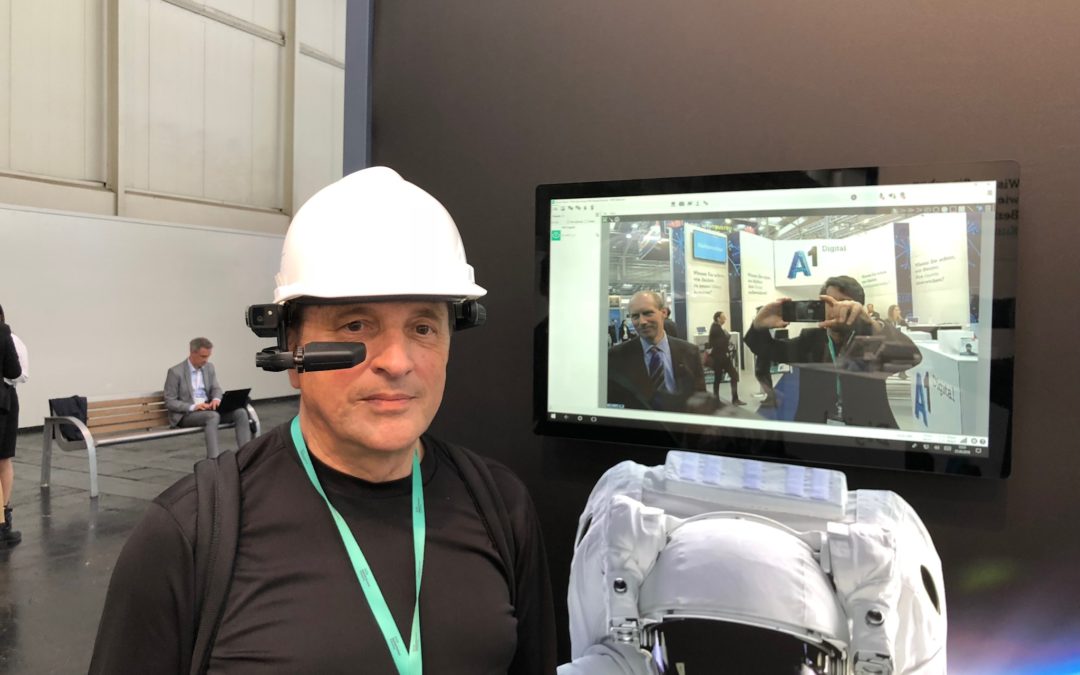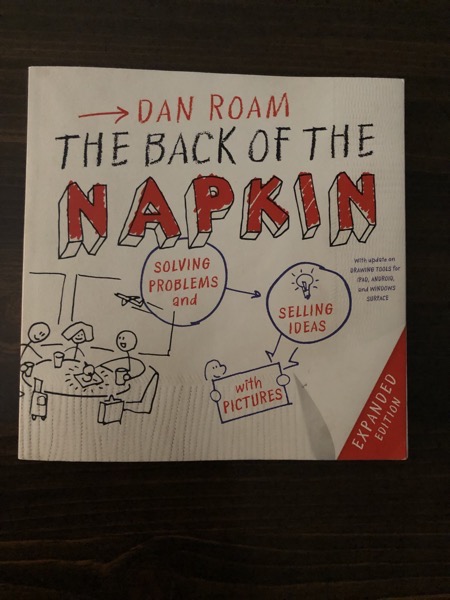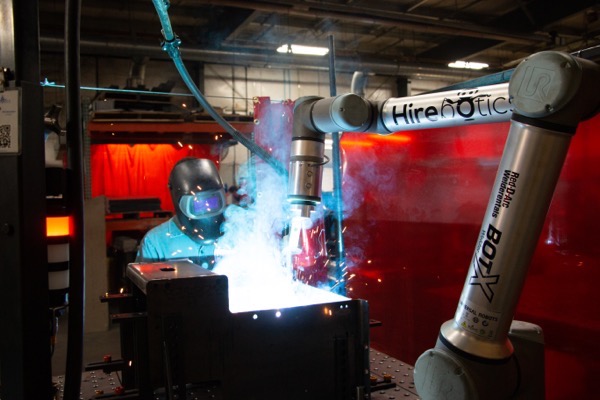
by Gary Mintchell | Aug 30, 2019 | Workforce
The local Y, the place where I work out daily, recently hired a maintenance guy. His attention to detail is phenomenal. His first week was a Daylight Saving Time change weekend. When I saw him pull out his smart phone and check the time as he set clocks in the locker room, I knew we had a winner..
Especially during the years when I went into plants daily helping customers solve problems and hopefully selling some products, I’d look in electrical panel enclosures with an eye toward the workmanship of the wiring. Were the wires pulled and uniformly bent? Neatly terminated in devices and terminal blocks? Labeled?
One day I called on a small stamping plant in my area. There was a new general manager, whom I met with. he was interested in press safety equipment. We walked out to the machinery. On one operating press, the cover of the electrical enclosure was hanging open held by a single screw out of the four that should be there. Wires were sticking out in a rat’s nest tangle of spaghetti.
I couldn’t get out of there quickly enough. And I never went back. There was no way I was selling a piece of sophisticated safety equipment in a plant with such poor electrical practices and attention to detail.
In my youth I hung out at times with older guys who could be described as “good ol’ boys” or “rednecks” I guess. But they could tune cars and rebuild engines better than the factory guys.
I have a lot of respect for people like that. Attention to detail. Caring about their work. Developing skills mostly on their own.
This Monday is Labor Day in the US. A last vestige of the labor movement of the late 19th and early 20th centuries, it’s a Federal holiday to remember and celebrate the nation’s workers.
Certain management types may have condescending views of workers, but I respect these people–electricians, pipe fitters, mechanics, millwrights, and all the other trades and workers. We would not have built great manufacturing without them.

by Gary Mintchell | Aug 28, 2019 | Productivity
You may have heard of “back of the napkin” thinking where some people are talking at a diner. One pulls out a (hopefully paper) napkin and draws something to explain a point.
Supposedly according to myth, President Reagan’s economic policy known as the Laffer Curve or “Trickle Down Economics” was drawn on the back of a napkin and to this day explains the economic theory of some politicians.

Drawing out thoughts helps us think through a problem. Maybe we won’t set government policy, but maybe we will understand something better or help our organization solve a problem or raise funds.
This book has been around for a while. I’ve heard the author interviewed on several podcasts. I’ve read a little in the past. I recommend this book. Written with wit and insight, it will help you think.
I also use a form of drawing when I take notes during presentations or interviews (like I’ll be doing this afternoon about an Internet of Things survey). I’ll jot down a thought and then use lines or circles to connect thoughts.
By the way, I use pen and a notebook. I love the Uniball Signo Micro 207 pen. It is inexpensive and writes first time, every time with a smooth line. Studies show people writing by hand have better retention than those taking notes on a computer. Plus, it’s hard to draw connecting lines on a computer.
I also recommend learning to use mind maps. Better than traditional outlining for organizing a longer paper.

by Gary Mintchell | Aug 27, 2019 | Manufacturing IT
I devoted a lot of time over several years working with an organization trying to construct a manufacturing IT platform that, using internationally adopted standards, would allow data to move seamlessly from engineering to construction to startup to operations and maintenance. Worley had key members on the team and provided time and effort to proof of concept work. The idea was to close the loop of as-designed to as-built to as-operated such that maintenance technicians could easily locate all necessary data about components and systems during startup and operations.
The project was under the umbrella of MIMOSA, of which I was chief marketing officer for a year. I still believe in the reason for the project, but for many reasons it just didn’t seem to take off. One reason was reluctance of major automation suppliers to sign on for a standards-based approach. With this announcement, it appears the work will be done through one supplier’s proprietary approach.
AVEVA announced that Worley has selected AVEVA’s Enterprise Resource Management solution as its preferred materials management platform. The partnership combines Worley’s Engineering, Procurement and Construction (EPC) knowledge with AVEVA’s industrial software expertise “to deliver the first cloud-based Enterprise Resource Management solution optimized for the EPC market.”
Like many businesses, today’s EPCs are challenged with reducing project costs while keeping pace with changing IT environments. However, as EPC projects operate as mini-enterprises, on-premises configuration and hosting of enterprise projects within private networks is not only costly, but restrictive and unsustainable in an industry undergoing mass consolidation. For global EPCs to remain competitive, the move from an on-premises infrastructure to cloud-based enterprise resource management is necessary.
Worley sought to help its customers find a way to streamline their materials management to deliver on these challenges while also creating process improvements, increased efficiency, ease-of-use and the ability to deliver in-house training. After reviewing AVEVA’s Enterprise Resource Management solution, which had historically been used in marine settings, Worley and AVEVA committed to developing the AVEVA solution to become the industry’s first cloud-based enterprise resource management platform purpose-built for EPCs.
“The EPC market is undergoing a period of change and our customers are looking to us to help them find solutions in this new world. The advances in technology and digital disruption have provided us with an opportunity to rethink our approach to materials management. We needed to deliver an efficient, cloud-based solution customized for the nuances of our market,” said Andrew Wood, CEO Worley. “With AVEVA, we saw a commitment to developing this solution together to create something best-in-class for engineering. We believe the AVEVA Enterprise Resource Management solution marks a step forward for productivity, efficiency and effectiveness that will drive the EPC industry forward.”
The cloud-enabled solution from AVEVA and Worley is the first of its kind and will be fully optimized for the EPC market. By embedding Worley’s subject matter expertise in EPC supply chain management, major updates to the AVEVA Enterprise Resource Management solution for EPCs includes:
- Project-specific functionality: Enabling EPCs to view and work on projects in AVEVA Enterprise Resource Management as standalone entities
- Updated catalogs and specifications module: Migration of Worley’s legacy corporate catalog and specifications to create a robust, easy-to-use model for EPCs
- Training solution: Allowing EPCs to streamline internal training on the new solution
In April 2019, Worley and AVEVA kicked off the final stage of a four-phase program to develop the AVEVA Enterprise Resource Management solution for EPCs. Phase one included design, while phase two incorporated the solution build, moving onto phase three integrations and catalog readiness, and now into phase four—project go-live and decommissioning of Worley’s legacy solution.
As part of the program, AVEVA Enterprise Resource Management reduced training time across engineering, procurement and project controls by 23%. Participants noted the solution was easy to use, provided quality training materials and the right functionality for EPC projects.
“The construct of the co-managed project team exceeded all expectations. We set up stringent delivery benchmarks and executed the project in phases to ensure alignment between the teams remained in place. A transparent and open working relationship with a keen focus on the success of the initiative played a crucial role in adjusting to all project challenges, and this solution is something we are proud to have delivered together,” commented Craig Hayman, CEO AVEVA.
The first official project roll-out for Worley on the AVEVA Enterprise Resource Management solution for EPCs will begin this month. Worley will use AVEVA Enterprise Resource Management and AVEVA Everything3D innovative plant project execution software in tandem, and the two companies have agreed to work to continually mature enterprise resource management for the EPC market.

by Gary Mintchell | Aug 26, 2019 | Automation, Technology, Workforce
I think even mainstream media has caught up to the current hiring situation—it is hard to find qualified people to fill positions. Heck, even last night stopping at a Cracker Barrel on the drive home from Tennessee we saw a harried staff and only about half the tables filled. They didn’t have enough people to staff the place.
Now try to find skilled welders. How about hiring a robotic welder? Easy to program and install. Always shows up for work. No drug test required. A very interesting idea.
The new for-hire BotX Welder—developed by Hirebotics and utilizing Universal Robots’ UR10e collaborative robot arm—lets manufacturers automate arc welding with no capital investment, handling even small batch runs not feasible for traditional automation.
The press release tells us, “Nowhere in manufacturing is the shortage of labor felt as urgently as in the welding sector, which is now facing an acute shortage of welders nationwide. The industry’s hiring challenge, combined with the struggle metal fabrication companies experience in producing quality parts quickly and in small runs, prompted Hirebotics to develop the BotX Welder.
“Many people didn’t believe that collaborative robots could perform such heavy-duty tasks as welding,” says Rob Goldiez, co-founder of Hirebotics. “We realized the need of a solution for small and medium sized metal fabricators trying to find welders.” Hirebotics’ hire-a-robot business model built on the Universal Robot, set the foundation for the BotX. It is a welding solution powered by the UR10e cobot that is easy to teach, producing automation quality with small batch part runs.

The BotX is now available to early access customers and will officially launch at FABTECH in Chicago, November 11-14.
In developing BotX, Hirebotics addressed two major hurdles of robotic welding: the ease of programming and the ease in which a customer can obtain the system without assuming the risk of ownership. There are no installation costs with BotX and with cloud monitoring, manufacturers pay only for the hours the system actually welds. “You can hire and fire BotX as your business needs dictate,” explains Goldiez.
The complete product offering comes with the UR10e cobot arm, cloud connector, welder, wire feeder, MIG welding gun, weld table, and configurable user-input touch buttons. The customer simply provides wire, gas, and parts. Customers can teach BotX the required welds simply via an intuitive app on any smartphone or tablet utilizing welding libraries created in world-class welding labs. A cloud connection enables 24/7 support by Hirebotics.
“We chose Universal Robots’ e-Series line for several reasons,” says Goldiez. “With Universal Robots’ open architecture, we were able to control, not only wire feed speed and voltage, but torch angle as well, which ensures a quality weld every time,” he says. “UR’s open platform also enabled us to develop a cloud-based software solution that allows us to ensure a customer is always running with the latest features at no charge,” explains the Hirebotics co-founder. “We can respond to a customer’s request for additional features within weeks and push those features out to the customer with no onsite visits,” says Goldiez, emphasizing the collaborative safety features of the UR cobots. “The fact that they’re collaborative and don’t require safety fencing like traditional industrial robots means a smaller foot print for the equivalent working space, or put another way; less floor space to produce same size part. In many cases less than half the floor space of traditional automation,” he says. “The collaborative nature of the solution enables an operator to move between multiple cells without interrupting production, greatly increasing the productivity of an employee.”
PMI LLC in Wisconsin, was one of the first customers of the BotX. “A large order would mean, we need to hire 10-15 welders to fulfill it – and they’re just not out there,” says VP of Operations at PMI, Erik Larson. “Therefore, we would No Bid contracts on a regular basis. With the BotX solution, we now quote that work and have been awarded contracts, so it has really helped grow our business,” says Larson. “The BotX Welder doesn’t require expensive, dedicated fixturing and robot experts on the scene.” Now PMI’s existing operators can handle the day-to-day control of the BotX, which welds a variety of smaller product runs.
The Wisconsin job shop has now stored weld programs for more than 50 different parts in their BotX app. “We are now able to deliver quality equivalent to what we could accomplish manufacturing with very expensive tooling typically used with higher-volume part runs,” says PMI’s VP of Operations, mentioning the ease of accessing the solution. “Being able to simply hire the BotX Welder, and quickly switch between welds by using our smart phone—and only pay for the hours it works—is huge for us. It took our area lead, who had no prior robotics experience, half an hour to teach it how to weld the first part.”
Another significant benefit was PMI’s ability to get the BotX welds certified for customers who require this. “This now means we do not need to use certified welders to oversee the operation. As long as the cobot welder’s program is certified, any operator can tend the cobot welder. This really unlocks a lot of resources for us,” says Larson. “Hirebotics and Universal Robots really hit the mark with this, we’re looking forward to a long partnership with them.”

by Gary Mintchell | Aug 23, 2019 | Leadership
The last person (well, maybe not totally the last) that I thought I’d listen to on a podcast would have been Charles Koch, CEO of Koch Industries and famously a supporter of “right-wing” causes.
But, there he was on the Tim Ferriss podcast.
No, I’m not going down the political rabbit hole.
It’s all about working together ethically to do something for the benefit of as many people as possible.
I thought I had noticed a difference in the actions of Koch over the past few years, and I was right. He discovered that there are issues where he shared values with people who had divergent views on other topics. For example working with a number of noted liberals to make progress on prison reform.
Listening to him I’m reminded of all the people–politicians and business and church people alike–who draw a line and refuse to work with people on the other side. There is bitterness, acrimony, division.
Or even the political Founders of the government of the US who warned us about the need for ethical behavior for the success of the union.
I may not agree with Koch on everything, but I love his optimism still alive in his 80s and his mission to build things that help others and help society.
This mission works in whatever country you live in. I have met people from Kazakhstan, Azerbaijan, Europe, even China with that same passion.
It reminds me that technology should be in the service of improving society and humans in general. It should be much more than making a very few people billionaires while exploiting us.












